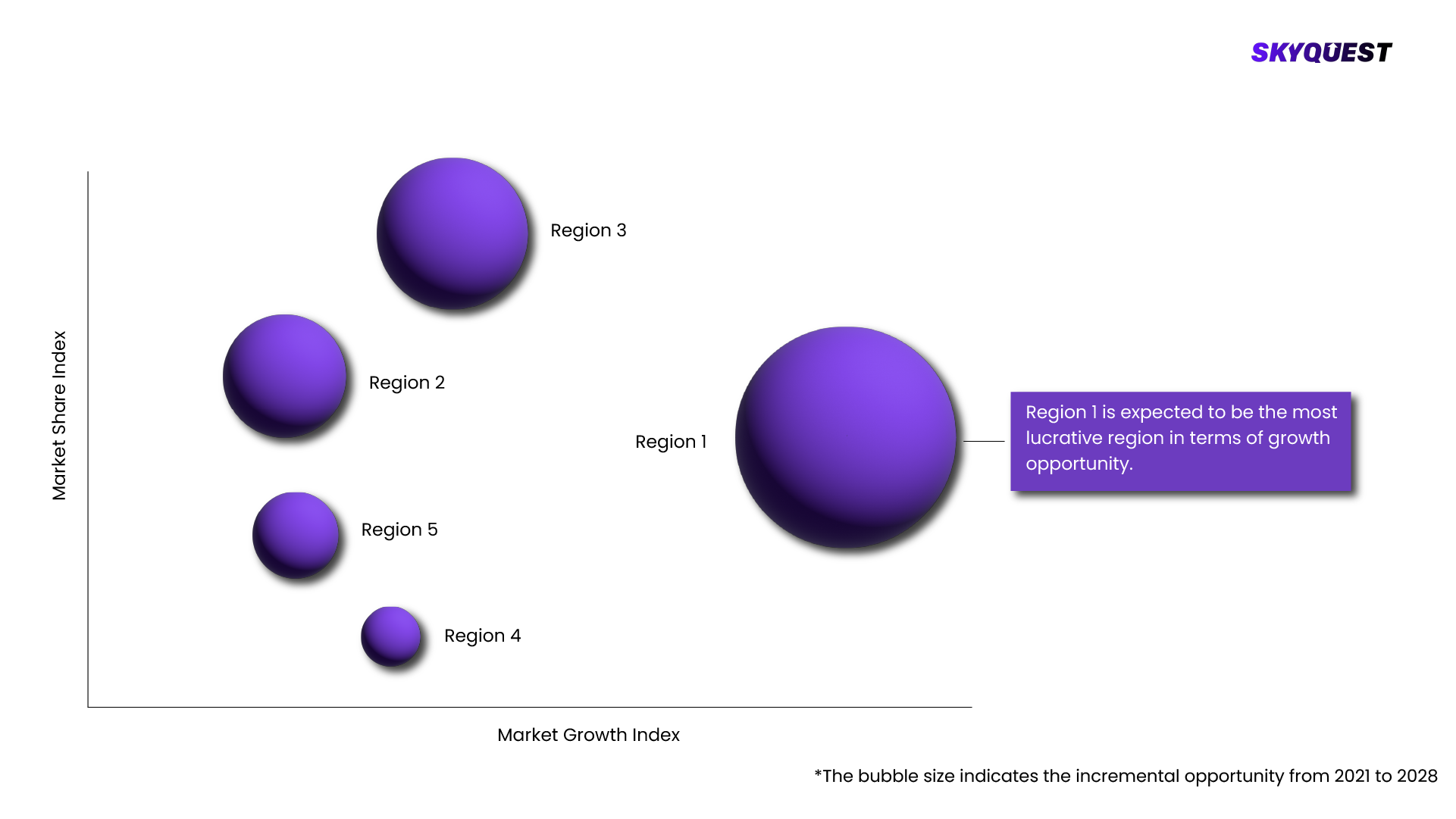The key players operating in the Augmented and Virtual Reality in Education Market are AR and VR in Education Market was valued at USD 2.9 billion in 2022 and is projected to reach USD 14.2 billion by 2028; it is expected to register a CAGR of 29.6% during the forecast period. , Advancing education through ongoing innovation & expansion in AR & VR technology, enhanced understanding through visualization, and real-world application and career readiness are among the factors driving the growth of AR and VR in education market., Driver: Enhanced understanding through visualization , Visualization of complex concepts serves as a powerful driver for incorporating AR and VR technologies in education. These technologies create immersive and interactive experiences that engage students and promote a deeper understanding of abstract ideas. , The integration of augmented reality (AR) in education has had a significant positive impact, enhancing the learning process in the classroom. One particular area where AR has proven beneficial is in geometry teaching, as it enables the explanation of fundamental operations like perimeters, areas, and diameters. In this section, we will delve into the application of AR in education, exploring its advantages and benefits for students. , Virtual reality (VR) offers immersive experiences in alternate realities that closely resemble the real world. This technology has found applications in education, where it facilitates the learning of complex subjects and fosters cultural connections among students. By leveraging VR, educators can teach the importance of respecting and appreciating cultural diversity, promoting acceptance of differences among students. The interactive nature of virtual reality allows students to engage with diverse environments and experiences, leading to a more inclusive and empathetic learning environment. , For example, in biology, AR and VR can enable students to explore the human body in 3D, allowing them to visualize the intricate systems and organs in a way that traditional textbooks cannot convey. In physics, students can use VR simulations to visualize and interact with abstract concepts like electromagnetic fields or quantum mechanics, helping them grasp these challenging topics more effectively. Moreover, AR and VR can transport students to historical periods, such as ancient civilizations or significant historical events, allowing them to immerse themselves in the context and gain a tangible understanding of the subject matter. By visualizing complex concepts, AR and VR technologies provide a dynamic and engaging learning environment that fosters comprehension and retention, making education more interactive and impactful. , Restraint: Standardization and interoperability in AR and VR implementation , The absence of standardized frameworks and guidelines for AR and VR development creates challenges in ensuring compatibility and seamless integration across different platforms, devices, and software applications. This lack of standardization hampers the widespread adoption of AR and VR in education as it limits interoperability between different hardware and software solutions. Educational institutions may face difficulties in finding compatible AR and VR tools and content that align with their specific needs and requirements. Moreover, the absence of industry standards can lead to fragmentation and inconsistency in the quality, functionality, and user experience of AR and VR applications. Establishing industry standards and promoting interoperability would enable educational institutions to have a wider range of choices and options, fostering flexibility and scalability in the implementation of AR and VR technologies. Additionally, industry standards would facilitate collaboration, content sharing, and the development of a robust ecosystem of AR and VR resources, further enhancing the effectiveness and accessibility of these technologies in education. , Opportunity: Immersive Collaboration and Communication , AR and VR technologies provide unique opportunities for collaboration and communication among students, regardless of their physical location. These immersive technologies allow students to interact in shared virtual spaces, enabling them to work together on projects and engage in collaborative problem-solving activities. Through avatars or virtual representations, students can communicate, share ideas, and collaborate on tasks in real-time. This fosters the development of teamwork skills, as students learn to coordinate and cooperate with their peers in a virtual environment. Collaborative activities in AR and VR promote peer learning, as students can exchange knowledge, provide feedback, and learn from each other’s perspectives. By engaging in collaborative experiences facilitated by AR and VR, students gain valuable skills for the future, preparing them to work effectively in collaborative environments in their academic and professional lives. , Challenge: Inadequate infrastructure and technical support , Adequate infrastructure is the requirement for high-performance devices and equipment to run AR and VR applications smoothly. These technologies often rely on powerful computers, smartphones, or specialized headsets, which may not be readily available or accessible in all educational institutions. Limited device availability can hinder the widespread adoption of AR and VR, restricting the number of students who can benefit from these immersive learning experiences. Reliable internet connectivity is another crucial infrastructure requirement for AR and VR implementation. High-quality AR and VR experiences often rely on a stable and fast internet connection to stream content, access online resources, and enable real-time collaboration. Insufficient or unreliable internet connections can lead to lagging experiences, disrupted interactions, and subpar user experience, limiting the effectiveness and usability of AR and VR in education. , Furthermore, technical support plays a crucial role in ensuring the smooth operation of AR and VR technologies. Educators and students may require assistance with setting up devices, troubleshooting technical issues, or understanding the functionalities of AR and VR software. However, inadequate technical support can leave educators feeling unsupported and ill-equipped to effectively integrate AR and VR into their teaching practices. , AR and VR In Education Market Ecosystem , Prominent companies in this market include well-established, financially stable providers of AR and VR devices. These companies have been operating in the market for several years and possess a diversified product portfolio, state-of-the-art technologies, and strong sales and marketing networks. Prominent companies in this market include Sony Group Corporation (Japan), HTC Corporation (Taiwan), Meta (US), Google (US), Microsoft (US), Panasonic Holdings Corporation (Japan), Hitachi Ltd. (Japan), Barco (Belgium), Lenovo (Hong Kong). , By end user, the Academic Institutions segment is expected to grow with the highest CAGR from 2023 to 2028 , The AR and VR in education market for academic institutions is expected to grow at the highest CAGR from 2023 to 2028. The academic users of virtual classroom solutions facilitate the process of learning and teaching through the sharing of data, voice, and video for effective collaboration and communication. This helps in the rationalization of the education process by enabling mobility, interaction, and real-time teaching. Virtual classroom solutions in the academic sector also open up new doors for knowledge sharing without the restrictions of time and distance. The academic institutions category is further segmented into 2 broad sections, namely, K-12 and higher education. This segmentation is based on the nature or level of education provided by these institutions. The academic institution type is expected to have a larger market size, as schools, colleges, and universities have been implementing and leveraging educational platforms and eLearning technologies for a more flexible and innovative learning experience. , By application, the classroom learning segment is expected to grow with a higher CAGR during the forecast period. , The classroom learning segment expected to exhibit a higher CAGR in the AR and VR in education market, by wafer size, from 2023 to 2028. Advancements in AR and VR technology have made it more accessible and cost-effective for educational institutions. The cost of hardware and software has decreased over time, making AR and VR more affordable for classrooms. Additionally, the technology has become more user-friendly, making it easier for teachers and students to integrate AR and VR into their learning environments. , By devices, AR HMD segment is expected to grow with a higher CAGR during the forecast period. , The augmented reality head-mounted display (AR HMD) segment is expected to grow at the highest CAGR from 2023 to 2028. It is a device that allows users to see a computer-generated image superimposed on their real-world view. AR HMDs are used in a variety of applications, including education, gaming, and training. AR HMD devices offer the ability to integrate virtual content seamlessly into the real-world context, enabling students to learn in a more authentic and meaningful way. Students can explore and understand abstract concepts by visualizing and interacting with virtual objects and information within their physical surroundings. This real-world contextual learning approach enhances knowledge retention and the application of learned concepts. , In 2028, Asia Pacific region can be attributed to factors such as technological advancements, investment and government support, a large and diverse student population, demand for high-quality education, e-learning and remote education, cultural preservation and heritage education, industry collaboration and partnerships, rising digital literacy, market competitiveness, and research and development initiatives. These factors collectively contribute to the increasing integration of AR and VR technologies in educational practices, transforming the learning experiences of students in the Asia Pacific region. , Recent Developments , In January 2023, HTC Corporation launched VIVE XR Elite headset combines Mixed Reality (MR) and Virtual Reality (VR) capabilities into one compact, lightweight, powerful and highly versatile device – perfect for gaming, fitness, productivity and more. , In January 2023, Panasonic partnered with Biel Glasses (Spain), it develops smart glasses to solve the mobility problems of visually impaired people, enabling a strong increase in their autonomy. With this partnership both the companies are developing smart glasses that support the visually impaired. It includes Panasonic's lightweight VR goggles with 5.2K HDR capabilities and Biel Glasses' technology designed for individuals with low vision. , In March 2022, Google acquired Raxium (US), an innovator in single panel MicroLED display technologies. The acquisition added to Google’s AR hardware portfolio as Raxium develops AR display technology (micro-LED). With this acquisition, Google focuses on developing AR glasses and headsets. , In April 2022, Google introduces multisearch in Lens, allowing users to search using both text and images simultaneously. This feature helps users find information about objects, refine searches by color or brand, and ask questions about visual attributes. , KEY MARKET SEGMENTS , By Offerings , Introduction , Software , Hardware , Sensors , Controllers , Cameras , Projectors and Displays , Others (Integrated Circuits) , Services , Managed Services , Professional Services , By Devices Type , Introduction , Interactive Whiteboards , Mobile Computing Devices , Virtual Reality Devices , Head Mounted Displays , Gesture Tracing Device , Head Up Displays , Handheld Devices , Projectors & Display Walls , Others (Security & video cameras and attendance tracking system) , By Service , Introduction , Professional Services , Managed Services , By Deployment , Introduction , On-Premise , Cloud , By Application , Introduction , Classroom Learning , Corporate Learning Management , Certifications , E-Learning , Virtual Field Trips , Student Recruitment , Others , By End Use , Introduction , Academic Institutions , K-12 , Higher Education , Corporates , Healthcare & Life Science , Retail & E-commerce , Telecommunication & IT , Banking, Financial Services, And Insurance , Manufacturing , Government & Public Sector , Others (media, entertainment and gaming; travel and hospitality; transportation and logistics; and energy and utilities) , By Geography , Introduction , North America , Recession Impact , US , Canada , Mexico , Europe , Recession Impact , UK , Germany , France , Rest of Europe , Asia Pacific , Recession Impact , China , India , Japan , South Korea , Rest of Asia Pacific , ROW , Recession Impact , Middle East & Africa , South America , KEY MARKET PLAYERS , Sony Group Corporation , HTC Corporation , Meta , Google , Microsoft , Panasonic Holdings Corporation , Vuzix , Cornerstone OnDemand, Inc. , Anthology Inc. , Lenovo .



